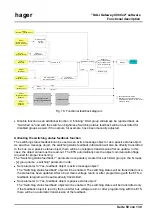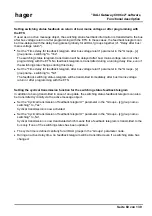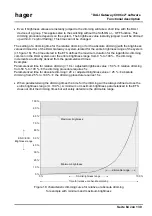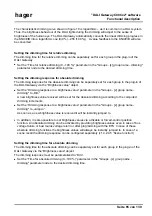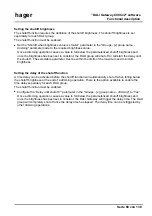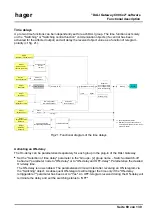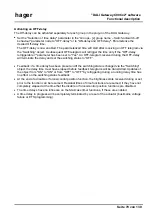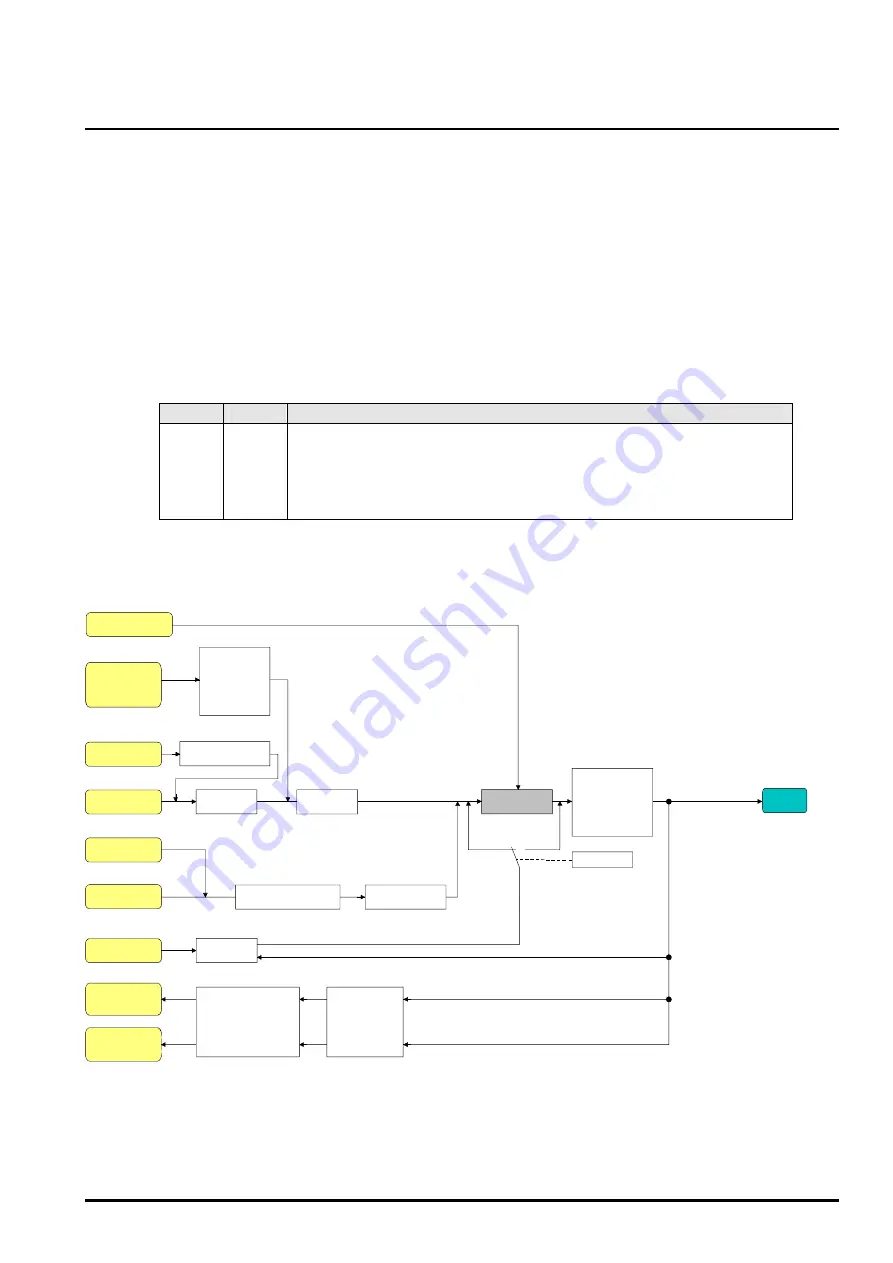
hager
"DALI Gateway C00Cx2" software
Functional description
Seite 55 von 130
Setting the forced-control position function as an additional function
As shown on the functional diagram (cf. Fig. 15), the forced-control position function can also be
combined with other functions of a group. In case of an active forced-control position function, the
upstream functions are overridden so that the affected group will be locked.
The forced-control position function features a separate 2-bit communication object. The first bit (bit 0)
of the “Forced-control position” indicated whether the group will be switched on or off by forced control.
In case of a switch-on by forced control, an ETS parameter determines the brightness value to be
switched on. The second bit (bit 1) activates or deactivates the forced control (cf. Table 2).
The behaviour of a group at the end of the forced-control position can be parameterized. In addition,
the forced object can be initialized upon the return of bus or mains voltage.
Bit 1
Bit 0
Function
0
X
forced-control position not active Regular control
0
x
Forced-control position not active Regular control
1
0
Forced-control position active: Switch off
1
1
Forced-control position active: Switching on to pre-defined
brightness value
Table 2: Bit coding of the forced-control position
forced-control
position
*
*
*
*
*
*
*
*
*
*
*
*
*
Object
"Switching"
Object
"Brightness value
feedback"
Object
"Central function"
Object
"Extension unit"
Object
"Brightness value"
Object
"Dimming"
Object
"Forced-control pos."
Object
"Switching
feedback"
Object
"staircase timer
function start/stop"
Time functions
Polarity of
central object
Staircase timer
function
(timing)
Soft-ON / OFF
Behaviour
- bus voltage failure
- bus voltage return
- ETS programming
Group
Scene priority
lower
higher
Scene
control
recall
storing **
automatic
shutoff function
Dimming speed /
Dimming behaviour
Verzögerung nach
Busspannungswiederkehr
zyklisches Senden
* = optional parameterization
** = Basically, no new scene value will
be stored if a disable or forced-control
position is active!
Fig.15: Functional diagram of the forced-control position function



















